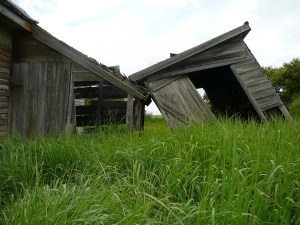Hi Nobleford!
Pastor Pete here.
I’m eager for the day I can fully begin my work among you as your Specialized Transitional Minister (STM)! However, I have to focus on finishing well where I am serving now, so I’m trying to be careful not to neglect completing my work here in Iowa as I begin to think of serving God in your midst.
It seems fitting to do two things at this point. One is to introduce myself as a person and Pastor, the other is to try to describe what the STM process is all about.
I will start with the second one, and hope to get to the first one in the next few weeks.
What an STM is and does
First off, reading what others have written about the role of the STM and about the increasing need for pastors to guide congregations out of difficult times into a renewed future will give you a good grounding before I try to describe it. To that end here are a number links to articles from the Banner and Christian Courier which are related to the work, of which the first one is maybe the most immediately helpful.:
http://www.thebanner.org/departments/2011/01/after-your-pastor-leaves
http://www.thebanner.org/departments/2012/01/a-theology-of-transition
http://www.thebanner.org/departments/2012/02/the-scarlet-number
Click to access Fractured%20Flocks.pdf
http://www.thebanner.org/together/2011/12/evaluations-that-help-pastors-flourish
My own fledgling-but-growing understanding is that in the church today we do not know how to honestly and authentically negotiate and evaluate expectations as pastors, councils, and congregations. That topic is reflected in the last link above. Also, similar to that, although it is just a theory still for me, there is a growing awareness that a lot of problems begin in the process of searching for a Pastor.
So, an STM is a ‘normal’ pastor with special training in understanding congregational dynamics who is equipped with a set of tools that can help a congregation discover where they get stuck and run into problems. Now, that description probably creates an expectation in you that the STM acts like a doctor or a soil analyst, testing and evaluating and then prescribing a fix. STM’s in general, and certainly I as an STM, do not work that way. We try to help the leaders and congregation ‘see’ the problem and help you figure out a solution… IF you want to make a change. If you don’t, it is not my job to force anything. With that said, I do need to share that I see the STM’s job as more similar to that of a Prophet than of a politician or ‘everything is going to be fine’ counselor. Prophets have always called God’s people back to what is important, and have challenged them if they are majoring in minors on God’s scale. Politicians try to keep everyone happy, which does not serve the Kingdom well, and telling people everything is going to be OK and not pushing them a bit when they are refusing (or unable) to see a problem does no long term good either. One of my mottos in ministry has always been “Comfort the afflicted… and afflict the comfortable.”
After investigating your church’s long term history and current culture, including the recent parting of ways with your pastor, and identifying themes that maybe return again and again without being dealt with, the plan is to begin to look at who the congregation is now in it’s current context, and undertaking a process of discerning what God might be calling you to be in that context. From that discovery process, we can together begin to dream of what a good future would look like, and then begin to describe what kind of pastor would be a good servant to help accomplish that goal.
You will find that if I am doing my work well I will be a very curious person, asking many many questions and giving very few answers. Here’s an example of some I already have: “Why are married women’s maiden names listed in the church directory?” and “If someone attends your church a number of times, and wants to get to know the congregation better so asks for a directory, and their name is McCoy or Smith, what conclusions might they come to seeing the maiden names?” Notice that the question is neutral. The question is intended to get you to ‘see’ in a new way something that is ‘normal’ – and so unnoticed – to you.
You will also find that if I give more direct answers or direction, they are usually in my sermons. Again, that is if I am doing my job well. Unfortunately, I do have strong opinions on some things, and I struggle to not reveal them. Being an STM is not about inflicting my wants and ideas on a congregation.
I also give answers in stories rather than directly. Seems to me someone 2000 years ago showed how effective that is! Ask any council members what they remember me saying in response to a question in the phone interview that I remember as being asked if I would come to Nobleford to raise a stink!
The whole STM process lasts at minimum one year, but lately for most has been averaging between one-and-a-half to two years, at the end of which a Search Team should be well in place and inviting applications. That depends somewhat on how strong the need is for an STM in other locations. If need is not high, the STM can stay until a few weeks before the new pastor arrives. These days, that does not happen much.
Aside from taking up my pastoral duties, there are two things that will begin happening quite soon after I am fully arrived and ‘on the job.’ One is that I will be looking for ways to get acquainted with all congregational participants as quickly as possible. Second, I will be looking for people who can be part of what we call the Transition Team, which is a group of people who help with all the tasks and who help process the information we glean, and who make proposals to council about the way forward.
Well, that feels like only a few snapshots out of a full video, there is so much more that could be said, but this will have to suffice.
I welcome comments or questions.



Recent Comments